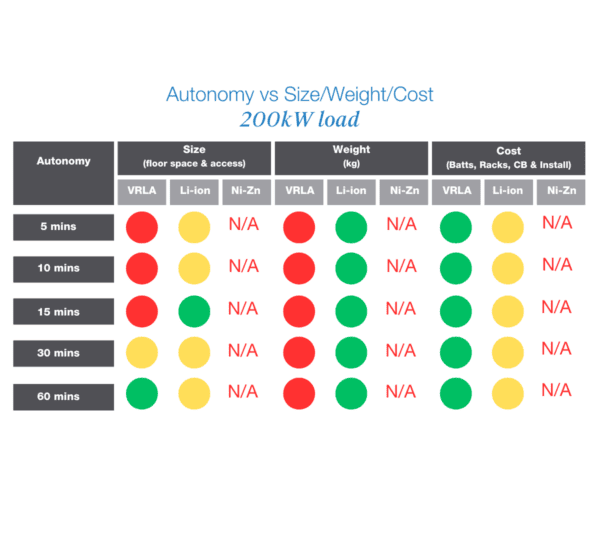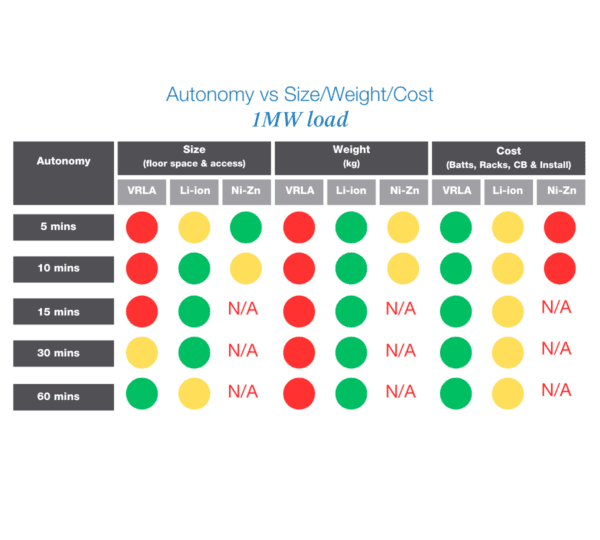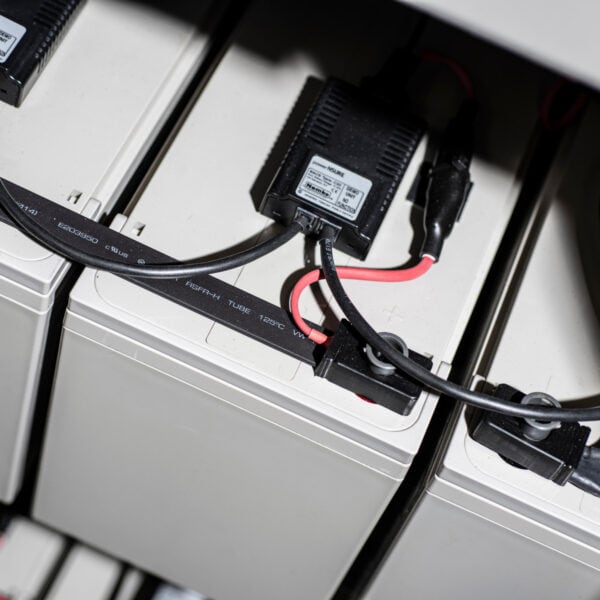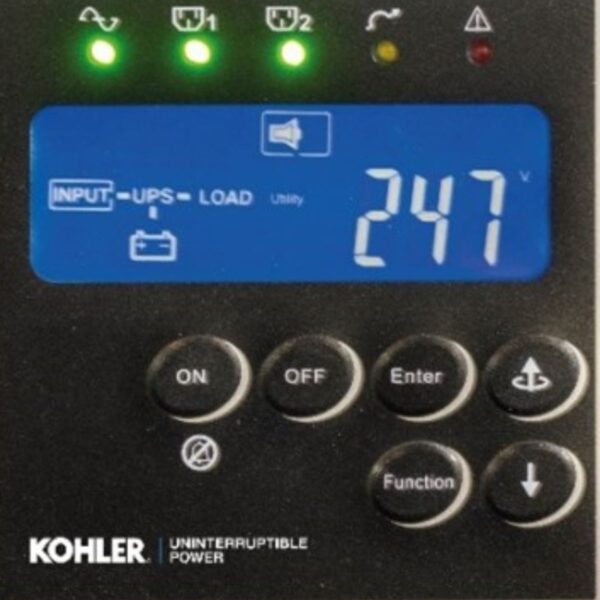In today’s digital age, uninterrupted power supply (UPS) systems play a crucial role in ensuring the continuity of operations and protecting sensitive equipment from power inconsistencies. At the heart of any UPS system is its battery configuration, which can significantly impact both performance and longevity. This guide explores the various UPS battery technologies and configurations available, helping you make informed decisions based on your organizational needs.
Introduction to UPS Battery Technologies
Traditionally UPS batteries have been Lead based and largely Valve Regulated Lead Acid (VRLA). More recently various Lithium Ion (Li-ion) technologies have become viable options for use with UPS as well as Nickel-Zinc battery technologies too. So, what is the best technology to use?
Choosing the right technology requires us to look at various factors depending on the requirements of the UPS design. These considerations include:
- Lifespan in years or number of cycles
- Load and autonomy
- Discharge/Recharge rates
- Operating temperature and degradation
- Size and weight
- Reliability
- Safety
- Recycling/Sustainability
And of course, the cost!
Understanding all of the above can guide the designer to choose the appropriate technology for the needs of the system. A key deciding factor can be the Load and Autonomy as this will affect the other considerations.
The tables below show some comparisons for Autonomy Vs Size weight and cost at different loads:

Autonomy vs Size/Weight/Cost with a 200kW load

Autonomy vs Size/Weight/Cost for 1MW load
UPS Battery reliability and availability
A UPS system can be configured with different battery configurations, each offering differing levels of resilience. As always, there is a trade-off between resilience and cost.
The three most common UPS battery configurations are:
- Single Battery String Configuration
- Parallel Battery String Configuration
- Redundant Battery Configuration
-
Single Battery String Configuration
A Single Battery String Configuration is the simplest form of UPS battery setup, where a single string of batteries powers the UPS. This configuration is typically suitable for smaller or less critical applications.
The advantages of this include:
- Lower initial costs
The disadvantages are:
- This offers the least resilience due to a single point of failure
- There may be potential downtime during maintenance or battery replacement
-
Parallel Battery String Configuration
A more robust configuration involves multiple batteries strings configured in parallel for capacity or resilience.
The advantages of this include:
- Enhanced power capacity, scalability and resilience
- Potential risk of downtime is reduced due to failure, maintenance or battery replacement
The disadvantages are:
- Requires higher initial investment
- Reduced autonomy during a battery failure
-
Redundant Battery Configuration
For mission-critical systems, redundant battery configurations provide the highest level of reliability. This configuration consists of parallel strings with an additional string for redundancy.
The advantages of this include:
- Highest reliability and uptime
- No loss of autonomy due to battery failure, maintenance or battery replacement
The disadvantages:
- Higher costs
- Requires more space
Understanding battery configurations in parallel UPS systems
Deciding on the level of redundancy of the UPS system should also extend to the redundancy of the battery as shown above. The redundancy and resilience can also be affected by using a common or separate battery arrangement on parallel UPS systems.
A common battery configuration is a single, shared battery bank that supports all of the UPS units connected in parallel. Conversely, a separate battery configuration means that each UPS unit has its own dedicated battery unit.
How To Choose the Right UPS Battery Configuration
Selecting the correct battery configuration depends on several factors, including:
- Criticality of the application: More critical applications may require redundant configurations.
- Budget constraints: Higher levels of redundancy and capacity come at a cost.
- Available space: Some configurations require more physical space than others.
- Maintenance capability: Consider the complexity of maintaining the chosen configuration.
Conclusion
Choosing the right UPS battery configuration is essential for optimizing both performance and investment in power backup systems. By understanding the different configurations and their implications, businesses can ensure robust power backup solutions tailored to their specific needs.
For more information on battery technology types for UPS, watch the on-demand recording of our recent CPD webinar Charging Forward: UPS Battery Innovations, Selection and Considerations or contact our sales team at [email protected].





